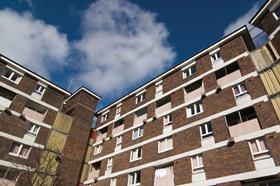Report finds serious problems with affordable rent system in advance of government spending review

The way the government has chosen to fund affordable housing construction has caused a serious disruption to build programmes in London and needs major reform, according to a significant new study by the Future of London pressure group.
The study, published today, found that there were big questions over whether the Affordable Rent programme, which runs from 2011 to 2015, will be able to deliver the 16,478 homes expected in the capital.
The Affordable Rent system, introduced by the coalition in 2010, saw the amount of grant given to housing associations to build homes drastically reduced on the basis they would be able to charge a higher rent to tenants in those homes.
The report found that by the end of 2012, 21 months into the 48-month programme, just 408 of the 16,478 homes had been completed in London, with 6,686 starts made. The remainder of the homes will have to be built between now and 2015 if the GLA is to meet its target, putting pressure on construction capacity.
Report author Andrew Heywood said the greater risks of developing under the Affordable Rent programme, which requires housing associations to raise far more private capital, was putting them off joining the programme, and that they were likely to develop fewer houses if the government continued with the same model after 2015.
The launch comes in advance of chancellor George Osborne’s Spending Round announcement next week, at which the government has committed to lay out a framework for how social housing will be funded from 2015 to 2025.
Heywood said: “The majority of housing associations say they would stay in the game with more affordable rent model (ARM), but at a lower level of build. More ARM will give successively lower building targets.
“It’s not enough for the government to say we’ll just have another ARM programme.”
The report recommends that affordable rent be continued as a specific product for working households, with traditional grant funding retained to build homes for the most deprived and those in receipt of state benefits. It finds that despite the higher rent levels, affordable rent houses are actually more likely than traditional social housing to be let to out of work families, meaning the higher rents simply increase the government’s housing benefit bill.
David Lunts, executive director of housing at the Greater London Authority, said: “Supply is falling further and further adrift of demand for affordable housing. The current model isn’t working as well as it needs to.
“We have to be wary of whether the drive to further reduce grant, coupled with the greater transaction risks [of affordable rent] mean registered providers (housing associations) will in future rather not take the government’s grant and then retain much more control over lettings.”
The launch also saw criticisms of the impact of the hiatus in social housing construction over the last two years.
Mark Baigent, project director at Greenwich Council, said: “The risk for local authorities in terms of lettings for affordable rent is that there’ll be a glut of this product in 2015, and then a complete famine again afterwards. This is hard for us and it’s not good in terms of the construction industry.”




























No comments yet